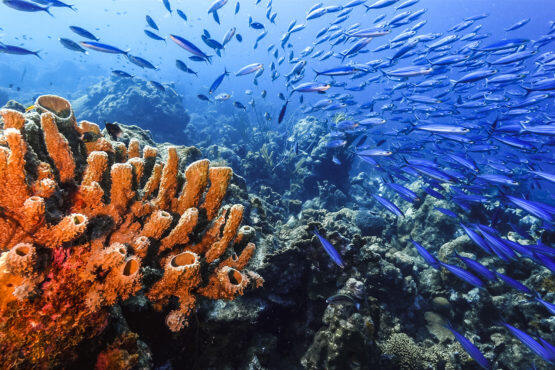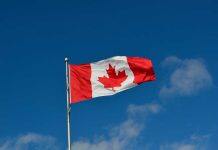A fossil study from Stanford University finds the diversity of life in the world’s oceans declined time and again over the past 145 million years during periods of extreme warming. Temperatures that make it hard for cold-blooded sea creatures to breathe have likely been among the biggest drivers for shifts in the distribution of marine biodiversity.


A fossil study from Stanford University suggests the diversity of life in the world’s oceans declined time and again over the past 145 million years during periods of extreme warming.
The research, published May 6 in Current Biology, adds to evidence that the ocean temperatures projected to result if global warming is left unchecked in the coming centuries would kill off many species of marine animals and shift most survivors away from the equator.
In modern oceans, equatorial waters have generally boasted the greatest biodiversity. Scientists for decades have warned that many tropical ocean species are close to their physiological limits at current temperatures, meaning they’ll have to migrate to cooler waters or perish as the world warms. And recent research suggests climate change is already driving a global shift in the distribution of modern marine species.
But until now, little has been known about how the relationship between ocean temperature and marine biodiversity has played out through geological time.
“What’s important about our study is it shows not only are you having a loss of diversity when ocean temperatures rise but that pattern is maintained over millions of years,” said geologist Thomas Boag, who co-authored the study with William Gearty and Richard Stockey while all three were PhD students at Stanford University’s School of Earth, Energy & Environmental Sciences (Stanford Earth).
The team found evidence for that pattern in fossil records for marine mollusks going back to the Early Cretaceous, around the time when the first flowering plants appeared and the Rocky Mountains began to rise. They used geochemical data as a proxy for past temperature. “There are some elements and molecules that can record the temperature of different places on Earth at a given time, and then they get preserved in the rock record,” explained Gearty, who is now a postdoctoral scholar at the University of Nebraska, Lincoln. “Measures of those molecules tell us roughly what the temperature was at the time and place on Earth where the rock was formed.”
In colder periods with temperatures akin to those in the modern era, diversity tends to peak at low latitudes. During hot periods such as the Early Eocene or Late Paleocene, when average annual temperatures climbed well past 27 degrees Celsius (80 degrees Fahrenheit), the researchers found biodiversity peaks at much higher latitudes and steeply declines near the equator.
Why biodiversity drops off
Armed with these data, the team developed a numerical model of the relationships between ocean surface temperature and biodiversity of cold-blooded marine animals, including mollusks. Building on a growing effort to apply knowledge from animal physiology to understand the fossil record in the context of a changing environment, the team then applied principles of thermodynamics and physiology to explain that relationship.
The results suggest ocean biodiversity increases exponentially with sea surface temperature up to about 20-25 C (68-77 F). Beyond that threshold, biodiversity drops off due to the limits of aerobic metabolism: As temperatures rise, water’s oxygen content falls, while animals’ need for oxygen grows.
This is similar to the way a mountain climber might need extra oxygen to reach the summit due to a combination of physical exertion and thin air at high altitude. Mountaineers have the option to carry an oxygen tank, but marine animals – particularly cold-blooded species that rely on the external environment to regulate their body temperature and metabolism – are pushed to migrate. Stationary and slow-moving creatures, such as sponges or sea stars, would more likely face extinction. “Cold-blooded animals in the ocean are a critical group when considering climate change,” said Boag, who is now a postdoctoral scholar at Yale. “They have a much more direct physiological response to climate change than warm-blooded animals do.”
While changes in the temperature of the water at the ocean surface vary by region, the global average is an important climate change indicator – and it has been consistently higher since around 1970 than at any other time since reliable observations began in 1880.
According to the authors, temperatures that make it hard for cold-blooded sea creatures to breathe have likely been among the biggest drivers for shifts in the distribution of marine biodiversity for at least 145 million years. “During global change events, the real killer is usually temperature and oxygen synergistically working together, as opposed to the oceans becoming really acidic or salinity changing rapidly, or loss of continental shelf area,” Boag said.
The findings paint a grim future for tropical marine ecosystems – and the many coastal communities who rely on them for food – in the absence of action to dramatically slow global warming. Stockey said, “Our analyses indicate that many equatorial marine animals are living close to their thermal limits in the modern ocean and are unlikely to be able to adapt to warming oceans over the coming centuries.”







































